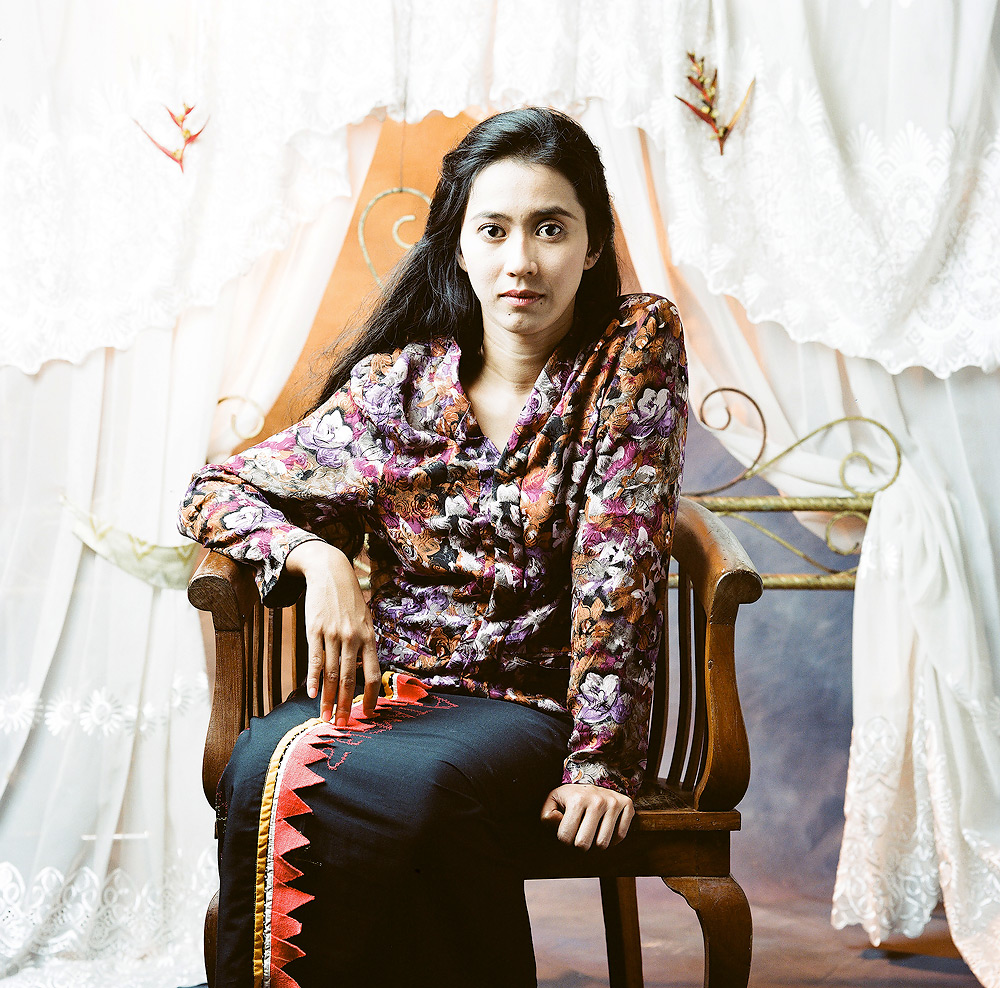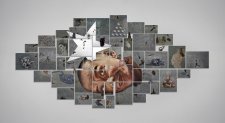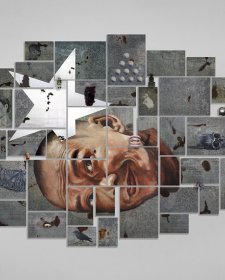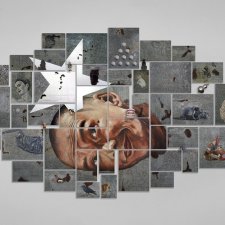Pahlasari has a particular interest in creating opportunities for non-arts communities to engage with the arts. She runs and curates a neighbourhood gallery called s.14 from her home, which shows work from well-known international and Indonesian artists as well as works from projects implemented within the community, for example with local preschool children or housewives. Recently Pahlasari completed a master’s degree in arts management. She works with arts organisations including Videolab and Platform3, and also serves as a part-time art project coordinator in art spaces and galleries. Pahlasari lives and works in Bandung.
Herra Pahlasari
Di depan kelambu terbuka (Before the open mosquito net) is one of the most iconic paintings of Indonesian modern art. Painted with expressive brushstrokes by S. Sudjojono, recognised as the father of Indonesian painting, in 1939, it could a model/figure painting for an anatomical study. This painting was created during the Persagi (Union Of Indonesian Drawing Experts, founded in 1938) era, which laid the foundation for modern art. Persagi is a milestone of the emerging nationalism in art during Dutch colonial times.
This painting follows the style of Persagi painters, but Sudjojono’s method – presenting the female figure facing towards the viewer; lips closed, her body leaning on her left arm and her eyes looking sharply forward – invoking mystery; it is as though we are invited to look beyond what we see.
The female figure sits awkwardly, distraught and uncomfortable. It seems that she is not comfortable becoming the ‘model’, ‘annoyed’ with the person who is painting her. It is as though she intends to leave; as soon as the painting session finishes.
S. Sudjojono expertly captures the ‘restlessness’ of the female model, and his own restlessness as the painter. The woman in front of the mosquito net – the nets are often placed upon beds – gives a ‘warm, personal atmosphere’. Di depan kelambu terbuka may well be S. Sudjojono’s erotic perception when recording the moment of separation – cold, quiet and flat.
Thedominant chocolate shades of the painting include four signatures from the painter. This was uncommon at that time – even if S. Sudjojono always signed the back of his paintings two or three times. Those four signatures are ‘intentional’, representing the anxiousness of the artist of an ‘ownership’ soon to be gone.
The identity of the woman remained a mystery for years. In the 1950s, Di depan kelambu terbuka became a popular topic of discussion among art observers. This revolved around: who is the woman? Did she have a relationship with the painter? Or was she just a model?
It was not until the publication ofSudjojono and me in 2006, the memoirs of Mia Bustam who had been married to the painter, that the woman was named. She identifies her as Adhesi, a prostitute from Jakarta to whom S. Sudjojono was once married. According to the memoir, living with an artist with irregular income was too much for Adhesi, who eventually left S. Sudjojono. It is possible to read Di depan kelambu terbuka as the last moment they spent together before separating.
But it could also relate to the artist’s perception of a mother figure; it is possible that the female figure behind the net reflects a ‘mother’ – a tough, steadfast plantation worker.
In 2009, Di depan kelambu terbuka was adopted by Herra Pahlasari into a photographic medium, Potret diri di depan kelambu terbuka (Self portrait before the open mosquito net). Herra has worked on numerous collaborative self portrait projects that reconstruct, via photography, the works of others such as Relation in time of Marina Abramovich and Ulay, 1977; Frida Kahlo’s painting Frida and Diego Rivera 1931 and Gilbert and George’s The singing sculpture 1969. Since 2001 her works have demonstrated ‘a reflection of self’ by exploring a variety of mediums, including ceramics, stitching, embroidery, sounds, prints and videos that are often presented as an installation.
In Self portrait before the open mosquito net, Herra wearing an almost identical blouse, takes on the role of Adhesi before the camera, attempting to delve into the atmosphere of the moment when S. Sudjojono painted the ‘original’. Herra began the project after reading Mia Bustam’s memoirs, which inspired many new commentaries on Di depan kelambu terbuka. Herra developed hers by involving her own personal experiences.
Spurred by the story behind Di depan kelambu terbuka, Herra became interested in the women who were once betrothed to S. Sudjojono: Adhesi, Mia Bustam and Rose Pandanwangi. Herra found that they had all a somewhat different presence on S. Sudjojono's canvas. According to her, that difference is tied to his personal judgement upon them. The prostitute Adhesi, the mosquito net, and the bedroom reflected S. Sudjojono’s sexual thoughts. Mia Bustam is pictured as a motherly figure; and S. Sudjojono’s paintings of Rose Pandanwangi are the most distinct – giving the perception of a modern woman.
In conjunction with her photography project, Herra also worked on a video, Membayangkan Adhesi/Miryam (A pose before the open mosquito net).1 The video imagines ‘all the possible Adhesi poses’ other than the pose portrayed in S. Sudjojon’s painting. Every time the poses appear on the screen, we see a text overlay explaining the pose – or how Herra should have posed in front of the camera. It is as though the text represents the photographer or the painter guiding the model’s movements.
To me, the video is more than a character study; it is also a representation of ‘the relationship of imbalanced power regarding men’s perception of women’ – the gaze. Membayangkan Adhesi/Miryam containsinsinuated thoughts about history and some bitter humour, especially for observers Indonesian art history.
Beyond that, both Potret diri di depan kelabu terbuka and Membayangkan Adhesi/Miryam attempt to take a relative position towards history, criticizing the established poses of women throughout the Indonesian art history.
Aminudin TH Siregar
Lecturer in the Visual Art Program
Bandung Institute of Technology (ITB), Bandung
1 According to Mia Bustam’s account, Sudjojono brought Adhesi home as his wife – it is not clear if they were actually married. He renamed her ‘Miryam’, which Mia Bustam relates to his interest in Jesus Christ and his redemption of Mary Magdalene.
Mia Bustam, Sudjojono dan Aku, Jakarta: Pustaka Utan Kayu, 2006, pp. 373–74.














